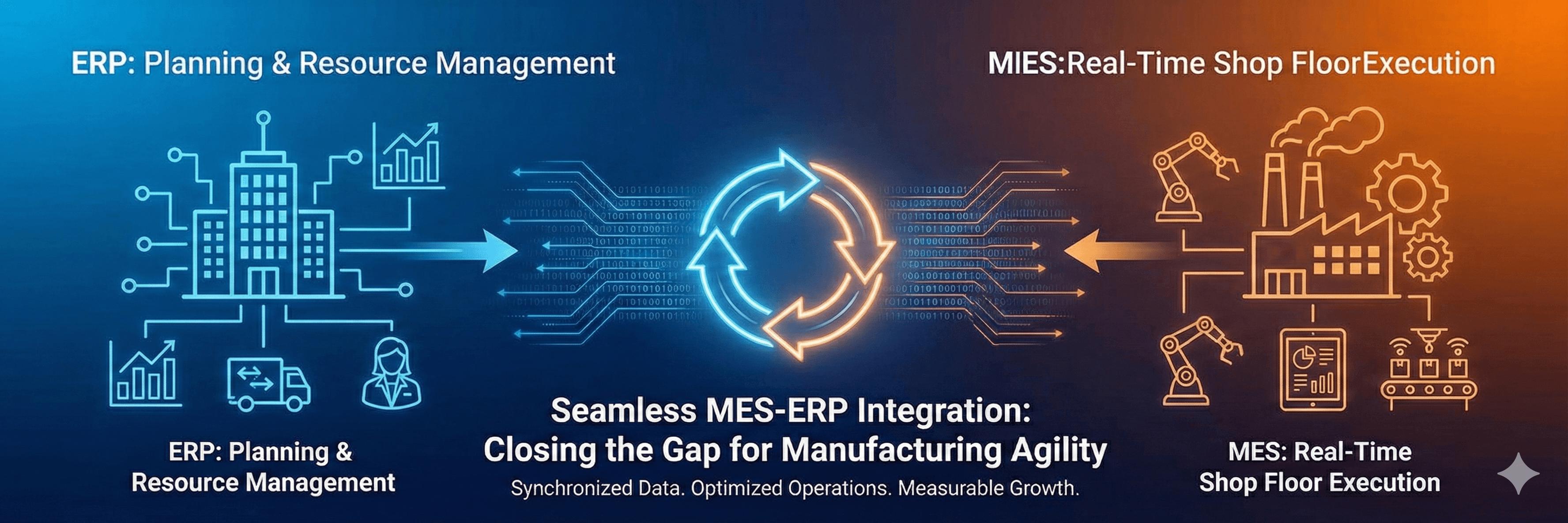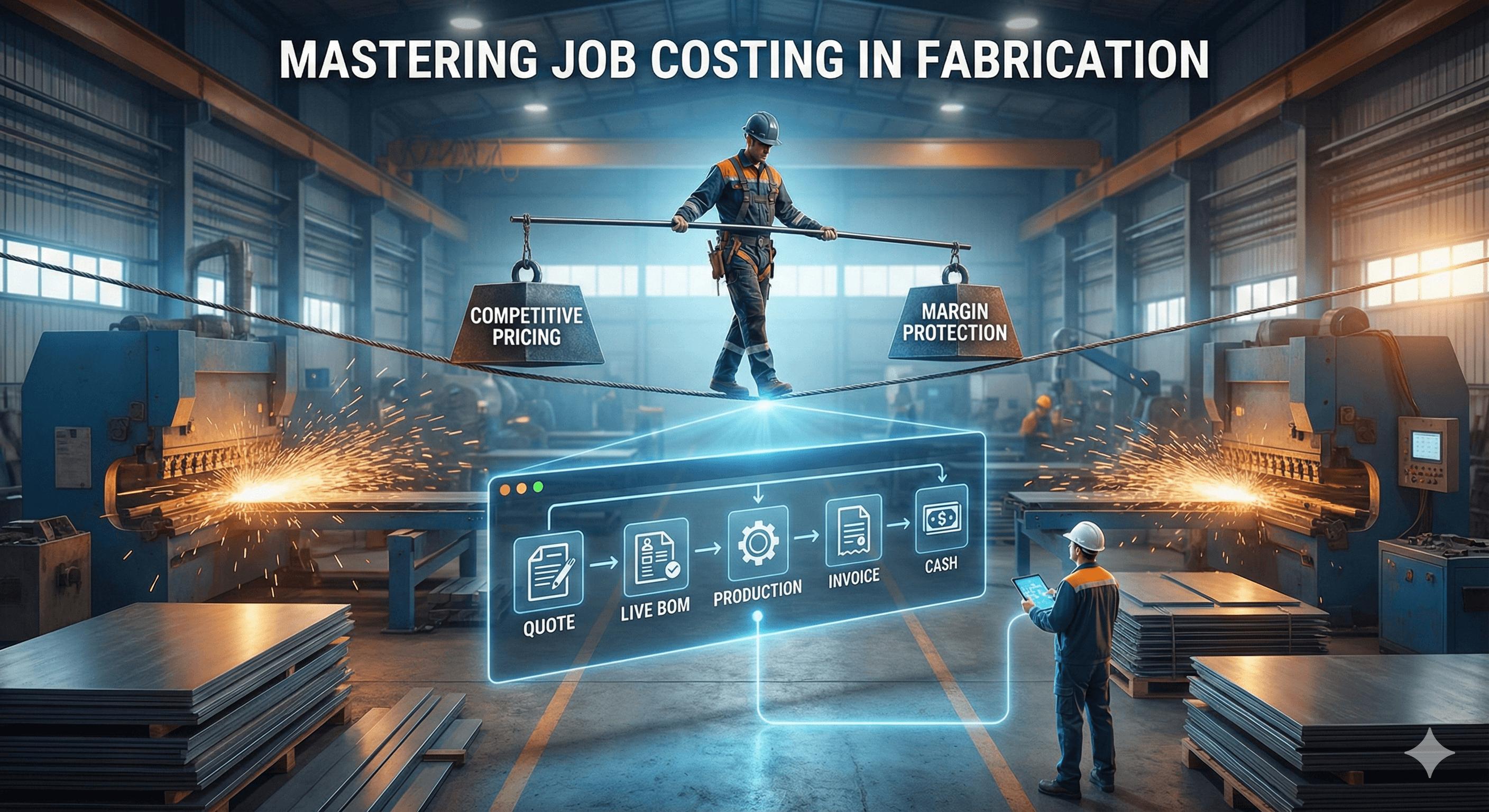Metal fabrication is a complex operation with—often literally—many moving parts. Juggling multiple demands and constraints, it only takes one small thing, like an unexpected machine breakdown, to derail your shop floor schedule, which can lead to delays, unexpected costs and dissatisfied customers. Good scheduling processes help to maximize your throughput, while ensuring that neither your people nor your machinery is over- or underworked.
Even though scheduling has a direct impact on your bottom line, getting it right isn’t easy. It demands clear and standardized processes but you also need the flexibility to move between different types of scheduling depending on customer demand and your constraints (e.g. machine/labor availability).
This guide will walk you through the essentials of job shop scheduling and what you can do to ensure production stays on track.
What we’ll cover:
- What is job shop scheduling?
- Types of production scheduling in metal fabrication
- Pitfalls of manual production scheduling
- Why use scheduling software
- What to look for in a scheduling software vendor
What is job shop scheduling?
Job shop scheduling is a way to manage custom or small-batch jobs with multiple assemblies. Unlike mass production, where processes are repeated and scaled up in line with demand, job shop scheduling requires a more flexible and nuanced approach, which takes into account the complexities associated with custom parts. Without a good schedule, which gives managers complete oversight and control of what’s happening on the shop floor, it’s extremely difficult to manage the following tasks effectively:
- Complex workflows involving multiple operations, complicated tooling and setup times
- Shifting priorities (e.g. urgent customer order)
- Machine maintenance
- Tight deadlines
- Limited resources (e.g. skilled labor shortages)
- High expectations for speed and accuracy from customers.
It doesn’t take much for a schedule to go off course. A staff member calling in sick or a machine unexpectedly breaking down can impact your entire shop floor operation, leading to downtime, missed deadlines and unhappy customers.
The value of getting it right
Given how damaging a bad shop floor schedule is to production and your business, there are clear benefits of getting it right. They might not be obvious at first but you’ll likely see it in the savings you make by not having staff work overtime, or reducing your churn rates because people are happy in their job. Your reputation as a trusted and reliable supplier, who delivers on time, will help to win more new and repeat contracts.
Key benefits of good scheduling:
- Better resource allocation, minimizing downtime and overwork
- Build machine maintenance into the schedule, reducing the risk of unplanned downtime
- Waste reduction and cost-savings thanks to fewer errors and reworks
- On-time delivery, driving up customer satisfaction rates
- High-quality output, no matter how complex the process
Types of production scheduling in metal fabrication—pros and cons
As our guide outlines, there are four key scheduling methods used in fabrication, each with their own advantages and drawbacks.
| Scheduling type | What is it? | Pros | Cons |
| Backwards infinite | Work backwards from the customer’s delivery date to create your schedule. | Better chance of on-time delivery.
Allocate resources to the right areas.
Good momentum working towards a common goal. | Can take longer to plan.
Less flexible.
Can be unrealistic.
Slower production times. |
| Forward finite | Production is scheduled from the start date, based on the job’s resources and requirements. | Recognizes constraints
Beat the deadline.
Encourages proactivity.
Beat the deadline. | Lack of flexibility.
Slower delivery times / potential missed deadlines.
Longer planning times. |
| Digital Whiteboard | A visual representation of your schedule. | Visually appealing.
Easy to update.
Promotes team collaboration. | Too simplistic (may not contain the level of detail).
Information overload. |
| Cell scheduling | Involves organizing tasks around a specific group (cell) of people and machinery. | Promotes efficiency, quality control and continuous improvement. | Difficult to coordinate.
Can lead to siloed working. |
In a modern manufacturing environment you don’t have to stick to one type of scheduling. In fact, it’s helpful if you can move between different ones depending on your resources and constraints. For example, a digital whiteboard is a good way to identify and address bottlenecks, while backward infinite is highly-suited to made-to-order environments.
Read more: Our free guide What If My Shop Floor Were More Efficient? explores the different types of scheduling and how you can make them work for you.
Pitfalls of manual production scheduling
Creating your schedule digitally, using enterprise resource planning (ERP) software, allows you to choose the most suitable one for you. Unlike manual schedules generated from spreadsheets, an ERP gives you a single dynamic schedule that is continually updated based on the latest requirements and constraints.
Here are just a few of the reasons why manual schedules no longer work:
Higher chance of inaccuracies
Lack of oversight means it’s difficult to miscalculate staff and machine availability. Just one small error can lead to bigger problems further down the line.
Time-consuming processes
Updating job changes manually—and communicating them to the team—takes up time that could be spent on value-added tasks.
Lack of real-time visibility
It’s difficult to schedule well if you don’t have real-time updates such as rush orders or unexpected staffing/machine changes.
Less flexible
You cannot easily make changes to improve efficiency.
Poor allocation of resources
Machines and labor can be either over- or underutilized.
Hard to scale
When you scale up, problems like lack of visibility become more pronounced—increasing the chance of error. Even if you manage to avoid these errors, creating a bigger and more complex schedule takes a huge amount of time.
Lack of data capture
Without digital systems in place, you won’t be able to capture data that can drive your decision-making and lead to improvements.
Why use scheduling software?
Scheduling using an ERP solves many of the challenges of manual scheduling. With real-time updates from the shop floor, you can respond quickly to change and ensure that everyone has the correct information to work from. It allows you to capture the critical data you need for better scheduling and business decisions, and allocate resources in an optimal way.
Solutions like MIE Trak Pro integrate scheduling with quoting, stock-taking and production, creating a single source of truth across your business.
What to look for in a scheduling software
When evaluating which scheduling software is right for your business, look for a vendor that can offering the following:
Do they understand your industry?
Manufacturing is a vast industry—and fabricators face specific challenges. Your software should support your workflows, without extensive customization or workarounds.
Do they support different types of scheduling?
Your ERP must support—not limit—your preferred scheduling type.
Can they manage complex custom orders?
No matter how complex your products, a good ERP will be able to handle custom specs, material and timelines even as you scale up.
Conclusion
If you’re still relying on spreadsheets for scheduling, it may be time to explore how software built specifically for fabricators can help you address your challenges. Investing in a system like MIE Trak Pro will help you manage your schedule more easily and effectively, transforming production workflow and putting your shop on the path to smarter, more profitable operations.



